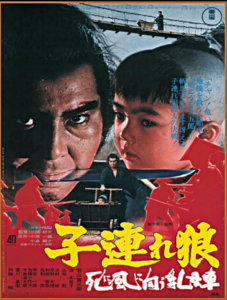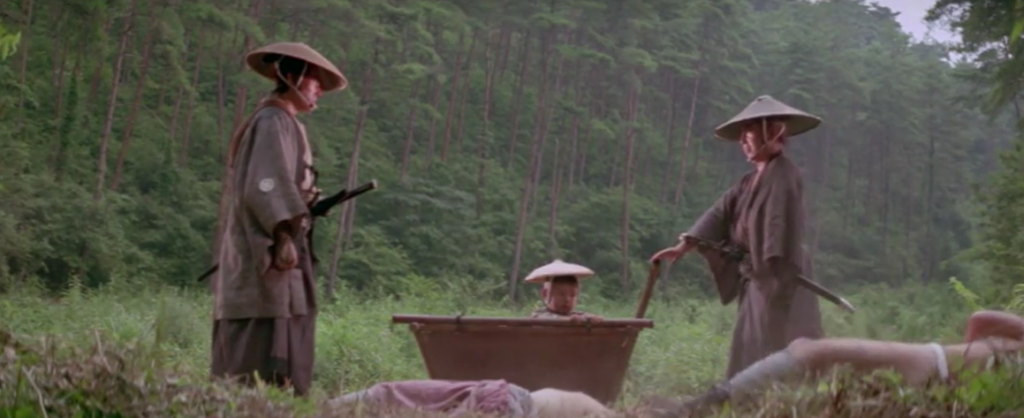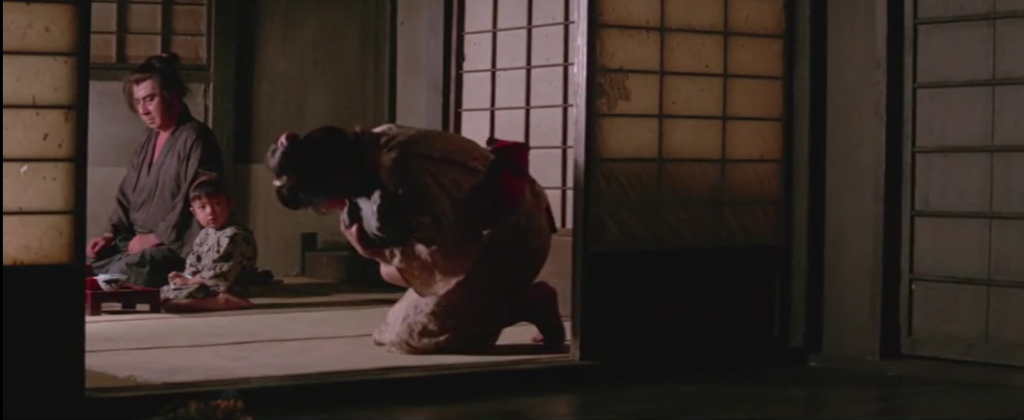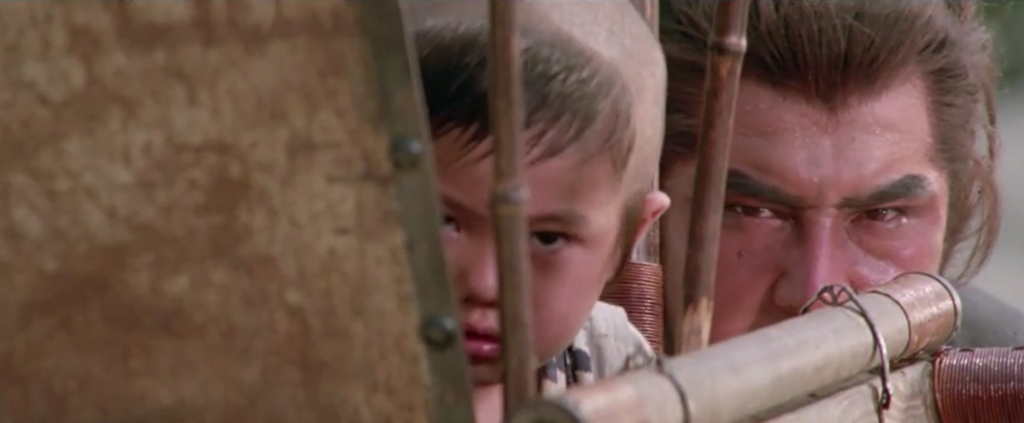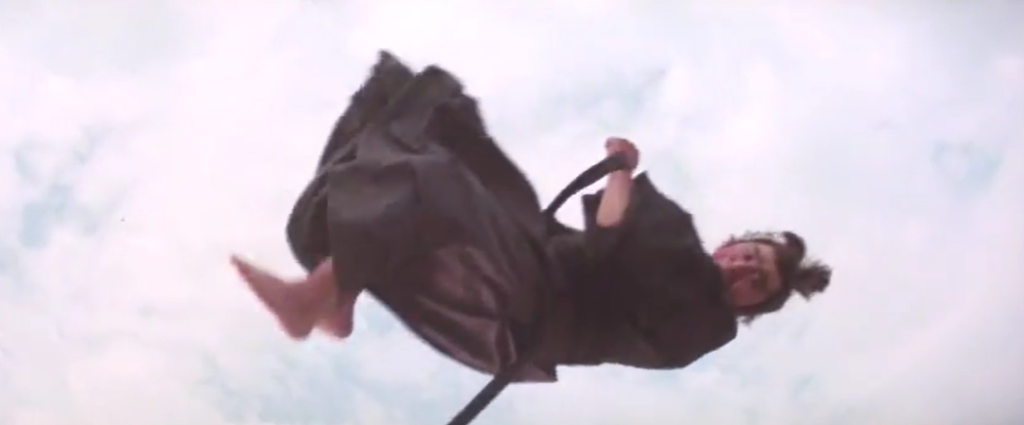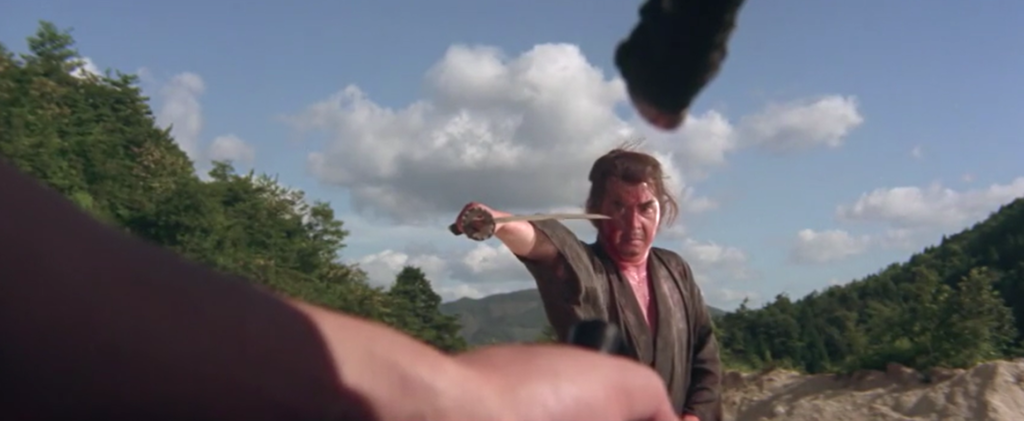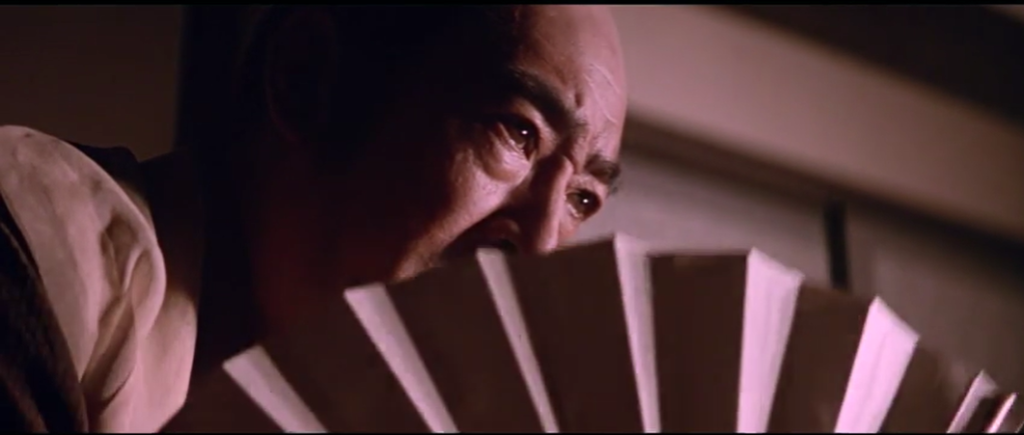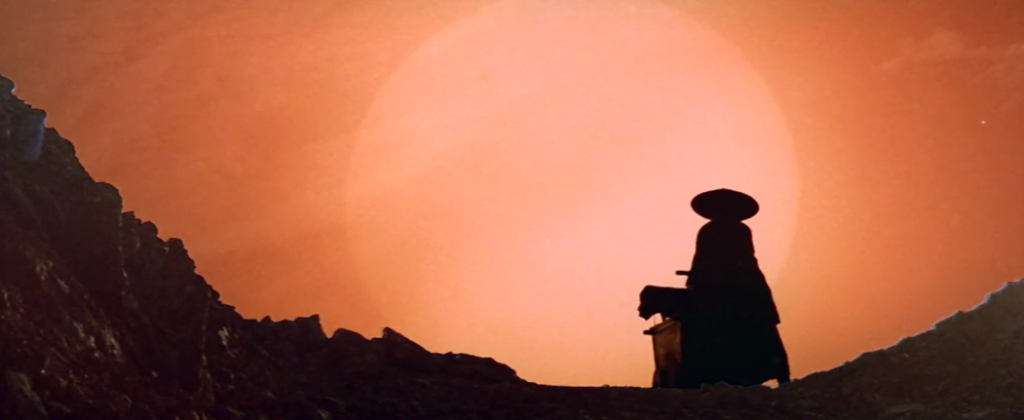Lightning Swords of Death / Sword of Vengeance: Part III / Lone Wolf and Cub: Baby Cart to Hades (1972)
“Why has a man of your stature become a mercenary?”
|
Synopsis: |
|
Genres, Themes, Actors, and Directors:
Response to Peary’s Review: With that caveat out of the way, I’ll note that Peary refers to Wakayama as “the most honorable of men” (yet someone who is “willing to use his boy as a decoy”) — a man who “comes to the rescue of a woman sold into prostitution”: … and then “finds himself in the middle” of this woman and “the cruel female who heads a powerful family”: … ultimately agreeing “to kill an evil governor” and “fighting a one-man war against both sides.” Through all this, “the boy watches the bloodshed without changing expressions.” Peary argues that while the “film moves along like a turtle with a broken leg,” there “are many interruptions for violent swordplay,” and “the action scenes are extremely imaginative, well filmed and choreographed.” A notable “highlight has him single-handedly shooting, blowing up, and slicing-and-dicing an entire army” — but “more violent [still] are his one-on-one confrontations,” such as when “he kills one skilled swordsman by flying over him and pushing his sword directly down through the top of his skull.” Peary concludes by noting that the film “could do without a rape sequence that has nothing to do with the plot” (I completely agree) and “a tasteless bit in which the would-be prostitute bites the tongue from the guy trying to force himself on her” (I’m okay with this scene!). While this flick clearly isn’t for all tastes, it’s easy to see how and why it would appeal to its cult followers, so I recommend it for one-time viewing just to check it out. Note: I had never heard of ohaguro before this film (a married woman painting her teeth black). Notable Performances, Qualities, and Moments: Must See? Categories
Links: |
